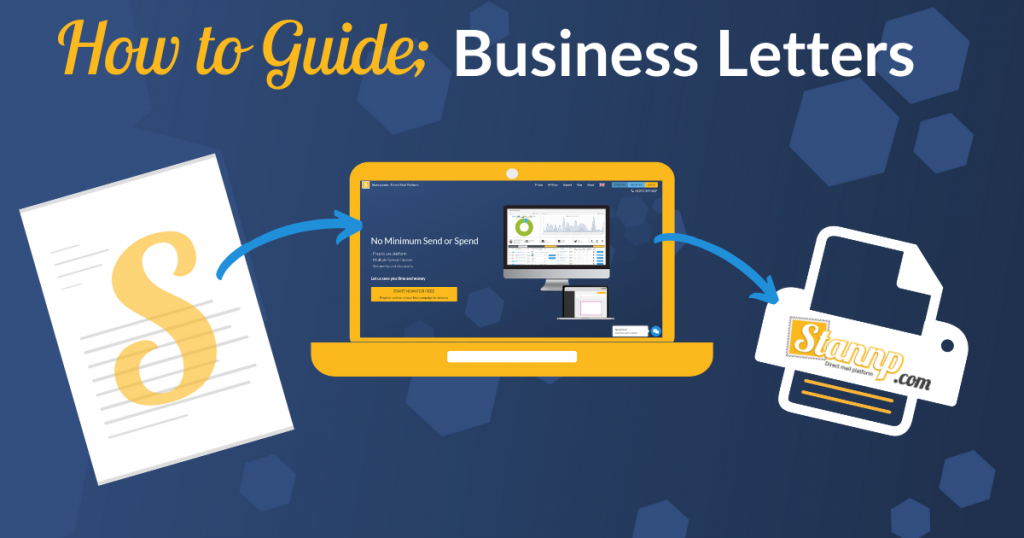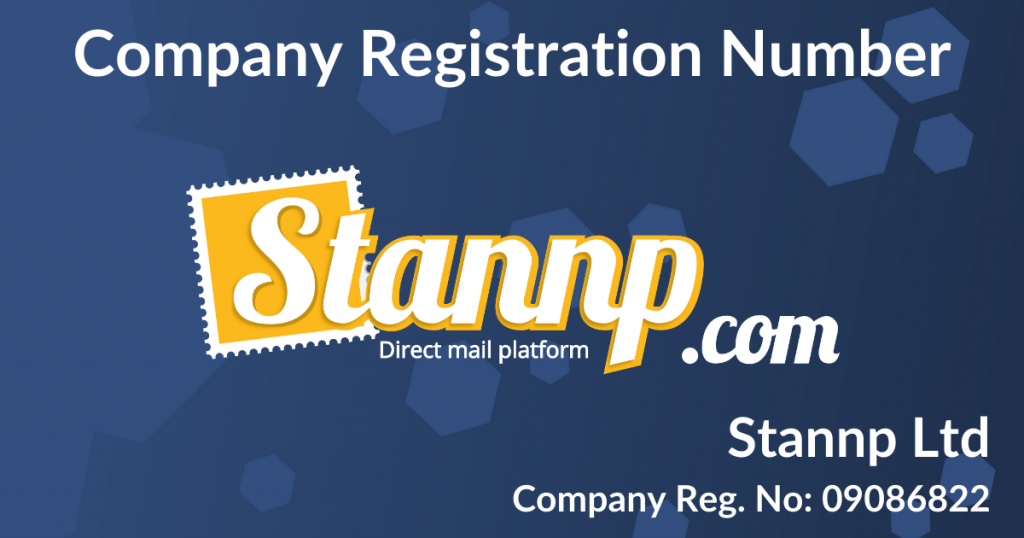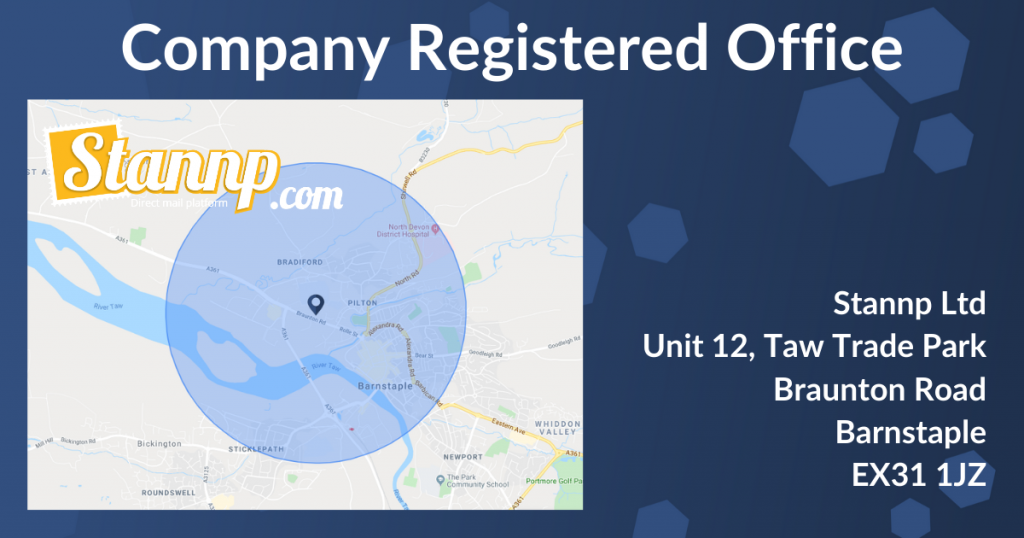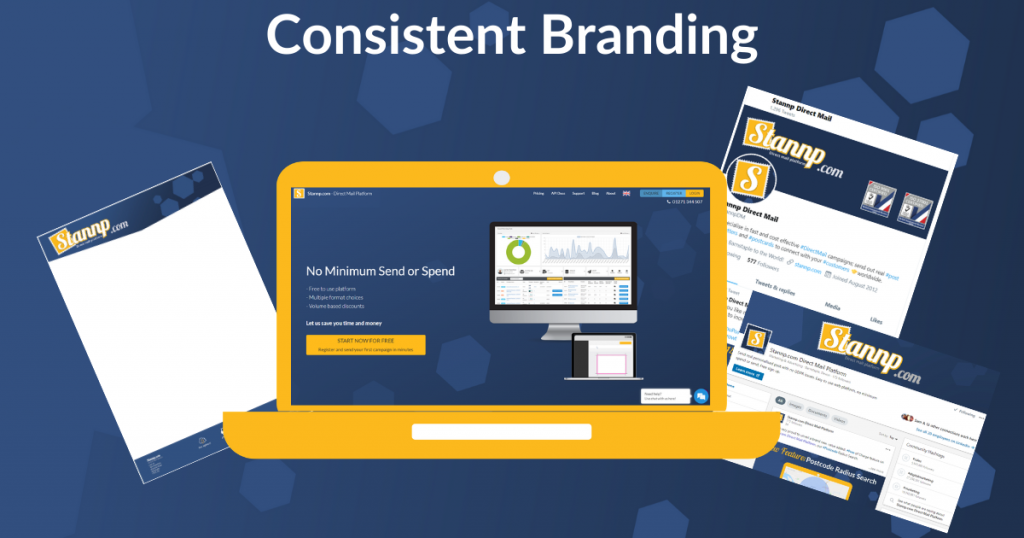
Are you running a business?
Did you know you are required by law to include certain details in both your business letters and other business documents and correspondence?
Don’t worry, the team at Stannp are here to help with a simple summary of the requirements, and a few ‘best practice’ tips along the way.
The Legal Framework
The requirements we are talking about are given in the “Company, Limited Liability Partnership and Business (Names and Trading Disclosures) Regulations 2015”. You can read the full text of the legislation on legisation.gov.uk, but in brief the requirements are;
Legal Name

The company’s full legal name (registered name) must be stated legibly on all correspondence and official documents.
This is why you will sometimes see ‘trading as’ or ‘T/A’ on business letters; the company is trading under one or more names or brands, but is legally registered as something else.
Sometimes the difference between a trading name and a legal name is relatively minor, for example ‘McDonald’s’ is a trading name, The company’s legal name is ‘McDonald’s Corporation’.
On other occasions, especially with consumer facing products, what you think of as the company name is actually a brand belonging to a company with a completely different legal name.
For example, Hellmann’s (mayonnaise), Lipton (tea), Knorr (sauces, stock cubes, ready-meals), Cif (cleaning products) and Magnum (ice-cream) are all Brands of Unilever PLC.
The requirement to include your legal name doesn’t just apply to letters, it applies to all correspondence and official documents. For example this would include invoices, order forms, receipts and websites. It also applies to emails “where the paper equivalent to the email would be included in the requirements.”
The legal name also has to be legible, which is usually interpreted as being displayed in a way that is visible and readable to the naked eye.
Country Of Registration

For UK companies the country of registration is the part of the United Kingdom in which the company is registered.
Companies House is the Registrar of Companies for England and Wales and assigns Company registration numbers. For Companies registered in England and Wales acceptable wording is one of the following:
- Registered in England and Wales
- Registered in England
- Registered in Wales
- Registered in London
- Registered in Cardiff
Alternatively companies registered in the other countries of the UK may also be listed as;
- Registered in Scotland
- Registered in Northern Ireland
Company Registration Number

A Company Registration Number (CRN, also known as ‘company number’) is a unique number to identify your company, automatically assigned by Companies House when a company is formed.
A CRN only applies to businesses registered with Companies House, therefore sole traders do not have a company registration number.
Company Registered Office

The registered office address is the official address of the company registered with Companies House. The Companies Act 2006 means that every company trading in the UK must always have a registered UK office, even if it is actually fulfilling its business services from outside the UK or selling products online.
The registered office is the address that any government department will use to send any communications to your company, and it is automatically assumed that any official notice sent to the company’s registered office address has been received by the company, so make sure you have access to your registered address and are able to receive any documents that are sent to that address!
Organisation Specific Requirements

Depending on your organisation structure there are some other specific requirements that you also need to include, for example;
- Charities; If your name does not include the words ‘charity’ or ‘charitable’ you must state that you are a charity.
- Limited Companies; If you are using the section 60 exemption of Companies Act 2006 and don’t have the word ‘limited’ as part of your company name, you must state that you are a limited company.
- Directors; You have no obligation to state the names of your directors. But if you include the name of one of your directors, (other than as a signatory to the letter or in the text of the letter), you must include the names of all of the Directors.
Best Practice Tips
Over and above just meeting your legal requirements, you probably also want your letter to be effective and eye catching! Here are a few top tips from Stannp to make your business letters as effective as possible.
Consistent Branding

Carry through your logo and brand colours in your letter, website and social media, etc. This helps to ensure the recipients of your letter have a consistent experience of your brand.
Tone of Voice

Think about how you want to come across to the reader, what impression do you want to give them? What is the ‘personality’ of your organisation or brand?
- Serious, knowledgeable
- Competent, successful, accomplished
- Sophisticated, elegant, prestigious, expensive
- Playful, fun, carefree
- Sincere, thoughtful, kind
Write with your chosen ‘personality’ in mind, and tailor your tone of voice to fit the personality you want to convey.
Readability

If you are aiming for clear, concise communication with your recipients, font choice can have a big impact on readability and ‘cognitive load’ (the amount of effort required to process and understand the text).
We recommend using Sans-Serif fonts; research shows that Cursive and Serif fonts are less readable and hold attention for less time than Sans-Serif fonts.
Keep it simple; use as few words as possible to convey your message. Avoiding unnecessarily complicated language increases the likelihood of your message being read and acted on.
Call to Action

The key to effective design is simplicity; the easier it is for recipients to understand your message, the more likely they are to respond.
A key part of this effective design is a clear call to action; think about what you want the recipient to do when they get the mailing, what action you want them to take, and then tell them!
Final Tip; Don’t forget to make use of Stannp’s personalisation features to make your letter as personal as possible for your recipients, it’s a great way to encourage your recipients to read and respond to your letters.
We hope you find our Business Letters Guide helpful for your Direct Mail Campaigns (and other business correspondence too).
For more helpful hints, tips, guides and info you can find us on Twitter, Facebook and LinkedIn, or feel free to speak to your account manager if you have any questions or need any help.






